Sewing Machine Thread Breaking at Needle: Causes & Solutions
Hello, fellow sewing enthusiasts! Today, I want to discuss a common frustration that many of us face: sewing machine thread breaking at the needle. It can be incredibly annoying and disrupt our sewing projects.
But fear not! In this article, I will delve into the causes behind this issue and provide you with practical solutions to prevent and overcome it. So, let’s dive in!
Causes of Sewing Machine Thread Breaking at Needle
1. Improper Thread Tension
One of the primary culprits behind thread breakage is improper thread tension. If the tension is too tight, the thread can snap under the pressure.
On the other hand, if the tension is too loose, the thread may not form secure stitches and break as a result. Adjusting the tension to the optimal level is crucial for smooth sewing.
2. Needle-related Issues
The needle itself can be a source of thread breakage. A dull or damaged needle can cause the thread to fray or snap.
Additionally, using the wrong needle size for the fabric thickness or type can put unnecessary strain on the thread, leading to breakage. Regularly changing and using the appropriate needle can help prevent this problem.
3. Incorrect Thread Type
Using the wrong thread type for your sewing project can also contribute to thread breakage. Certain fabrics require specific thread types, such as polyester, cotton, or silk.
When the thread and fabric are not compatible, the thread can break due to the tension mismatch. Always choose the appropriate thread that suits your fabric.
4. Bobbin Problems
Issues with the bobbin can cause the thread to break at the needle. If the bobbin is not threaded correctly, uneven tension can result, leading to breakage.
Similarly, a poorly wound or low-quality bobbin can cause disruptions in the thread flow, resulting in breakage. Make sure to wind the bobbin properly and use high-quality bobbins for smooth sewing.
Solutions to Prevent Sewing Machine Thread Breaking at Needle
1. Check and Adjust Thread Tension
Begin by checking the tension settings on your sewing machine. Ensure that the tension is neither too tight nor too loose.
Gradually adjust the tension dial until you achieve the desired balance. Remember to test the stitches on a fabric scrap before moving on to your actual project to ensure the thread is not breaking anymore.
2. Choose the Right Needle
Selecting the correct needle for your sewing project is crucial. Consider the fabric type, weight, and thickness before choosing the needle size. Use a sharp and undamaged needle to prevent the thread from breaking.
Replace the needle regularly, especially if you notice any signs of wear or if you have been working on a particularly demanding project.
3. Select the Appropriate Thread Type
Always use the appropriate thread type for your fabric. Different fabrics require different thread materials and weights.
Check the thread label to ensure compatibility with your fabric. Using the wrong thread can lead to tension issues and eventual thread breakage. Invest in high-quality threads that are suitable for your sewing needs.
4. Maintain the Bobbin Correctly
Proper bobbin maintenance is essential for preventing thread breakage. Ensure that the bobbin is correctly threaded and that the thread is evenly wound. Clean any lint or debris from the bobbin area regularly.
Consider using quality bobbins that are specifically designed for your sewing machine model. A well-maintained bobbin will contribute to smooth stitching without thread breakage.
What is the Remedy for Lower Thread Breaks?
Lower thread breaks in a sewing machine can be frustrating, but there are several remedies you can try to resolve the issue. Here are some potential solutions:
- Check the Thread Path: Ensure that the lower thread is properly threaded through the machine’s tension disks, guides, and bobbin case. Any obstructions or incorrect threading can cause the thread to break. Follow the threading diagram in your machine’s manual to ensure the thread is correctly routed.
- Bobbin Tension: Improper bobbin tension can lead to lower thread breaks. Check the bobbin tension by holding the bobbin case with the thread extended. The bobbin should unwind slightly when gently shaken. Adjust the tension screw on the bobbin case if needed. Make small adjustments at a time until you achieve the desired tension.
- Bobbin Winding: Ensure that the bobbin is wound evenly and tightly. Unevenly wound bobbins can cause tension issues and result in thread breaks. Use the machine’s bobbin winding feature or a separate bobbin winder for consistent and uniform winding.
- Bobbin Type and Compatibility: Ensure that you are using the correct bobbin type recommended for your sewing machine. Using incompatible bobbins can lead to tension problems and thread breaks. Consult your machine’s manual or contact the manufacturer for information on the appropriate bobbin type to use.
- Bobbin Case Maintenance: Regularly clean the bobbin case to remove any lint, debris, or residual thread. A dirty bobbin case can affect the smooth flow of the lower thread, leading to breakage. Follow your machine’s manual for instructions on how to clean and maintain the bobbin case properly.
- Needle Selection: Using the correct needle can prevent lower thread breaks. Ensure that you are using the appropriate needle type and size for your fabric. A damaged or dull needle can cause thread breaks, so replace the needle regularly.
- Machine Maintenance: Regularly clean and oil your sewing machine as per the manufacturer’s instructions. A well-maintained machine operates smoothly, reducing the chances of lower thread breaks.
- Thread Quality: Poor-quality or old thread can contribute to thread breaks. Invest in a high-quality thread from reputable brands. Check the thread for any knots, weak spots, or inconsistencies that may cause breakage.
- Sewing Speed: Sewing at high speeds can put additional stress on the lower thread and increase the likelihood of breaks. Slow down your stitching speed to allow the machine to form proper stitches and reduce tension on the thread.
- Bobbin Case Compatibility: Ensure that the bobbin case is compatible with your sewing machine. Using a bobbin case that is not specifically designed for your machine can lead to tension issues and lower thread breaks. Check with the manufacturer or refer to your machine’s manual for the correct bobbin case model.
Why does my Top Thread keep Breaking?
The top thread breaking on a sewing machine can be frustrating, but there are several common reasons for this issue. Let’s explore some possible causes:
- Improper Thread Tension: Incorrect thread tension is one of the primary causes of top thread breakage. If the tension is too tight, it can put excessive strain on the thread, causing it to snap. Similarly, if the tension is too loose, the thread may not form secure stitches and break as a result. Check your sewing machine’s tension settings and adjust them as needed.
- Needle Issues: A damaged, bent, or dull needle can cause the top thread to break. When the needle is not in optimal condition, it can’t properly form stitches, leading to tension problems and thread breakage. Make sure to use the correct needle size and type for your fabric, and replace the needle regularly to prevent breakage.
- Incorrect Threading: Improper threading of the machine can also cause the top thread to break. Double-check that the thread is correctly routed through all the guides, tension disks, and the needle. Ensure that the thread is not caught or tangled anywhere along the path.
- Bobbin Winding: If the bobbin is not wound evenly or if it is overfilled, it can cause tension issues and lead to top thread breakage. Make sure to wind the bobbin smoothly and evenly, following your machine’s instructions. Avoid overfilling the bobbin, as it can affect the thread’s flow and cause breakage.
- Thread Quality: Poor-quality or old thread can be more prone to breakage. Low-quality threads may have weak fibers or inconsistencies, making them less reliable during sewing. Invest in high-quality threads from reputable brands to minimize the risk of top thread breakage.
- Machine Maintenance: A poorly maintained sewing machine can contribute to thread breakage. Clean your machine regularly, removing any lint, dust, or debris that may have accumulated. Lubricate the machine as recommended by the manufacturer to ensure smooth operation.
- Thread Snags: Check for any snags or rough spots on your sewing machine’s thread path. Burrs or rough edges on the machine’s components can cause the top thread to catch and break. Smooth out any rough areas or seek professional assistance if needed.
- Sewing Speed: Sewing at high speeds can put additional stress on the top thread, increasing the chances of breakage. Try reducing your sewing speed to allow the machine to form proper stitches and reduce tension on the thread.
By considering these potential causes and implementing the appropriate remedies, you should be able to address the issue of top thread breakage.
Do Snapping Bobbin Threads Break More Often?
Snapping bobbin threads can contribute to an increased likelihood of thread breakage in sewing machines. When the bobbin thread snaps, it creates tension issues that can affect the upper thread’s smooth flow and result in breakage.
This can happen due to factors such as incorrect tension settings, incorrect bobbin threading, or a malfunctioning bobbin case. It is important to ensure proper bobbin winding, correct threading, and regular maintenance of the bobbin area to minimize the chances of bobbin thread snapping and subsequent thread breakage.
Can I Stop Thread Breakage by Threading the Sewing Machine Correctly?
Threading the sewing machine correctly is an essential step in preventing thread breakage.
Proper threading ensures that the thread flows smoothly through the machine, minimizing tension issues and potential snags that can lead to breakage.
When threading the machine, make sure to follow the manufacturer’s instructions and pass the thread through all necessary guides, tension discs, and the needle in the correct order.
Additionally, ensure that the thread is securely seated in the tension discs and properly threaded through the needle eye.
By threading the sewing machine correctly, you can significantly reduce the chances of thread breakage and enjoy more seamless stitching.
Why does the Thread keep Breaking on my Sewing Machine?
Thread breakage can occur due to various reasons, including improper thread tension, using a dull or incorrect needle, using the wrong thread type, or having issues with the bobbin. By addressing these factors, you can prevent thread breakage.
Can using an old needle cause thread Breakage?
Yes, using an old or damaged needle can cause the thread to break. It is recommended to change your needle regularly, especially if you notice any signs of wear or if you are working on a challenging sewing project.
How often should I Replace my Sewing Machine needle?
As a general rule, it is advisable to change your sewing machine needle after every 8-10 hours of sewing or for each new project. However, if you notice any issues with the needle, such as bending or dullness, it is best to replace it immediately.
Does the thread quality affect breakage?
Yes, the quality of the thread can impact thread breakage. Low-quality threads may have inconsistencies and weak fibers, making them more prone to breakage. Investing in high-quality threads suitable for your sewing needs can significantly reduce thread breakage.
What should I do if none of the solution is work?
If you have tried the solutions mentioned in this article and are still experiencing thread breakage, it may be helpful to consult a professional sewing machine technician. They can examine your machine for any underlying mechanical issues that might be causing the problem.
Could my sewing machine be causing the thread to break at the needle?
Yes, a malfunctioning sewing machine, such as issues with the bobbin case or the needle bar, can cause thread breakage. Get your machine inspected and repaired if necessary.
Can using the wrong needle size lead to thread breakage at the needle?
Using the wrong needle size can indeed lead to thread breakage at the needle. Ensure that the needle size matches the fabric weight and type you are working with.
Are there any common mistakes that can cause thread breakage at the needle?
Common mistakes that can cause thread breakage include incorrect threading, improper needle insertion, excessive tension, and pulling or tugging the fabric while sewing.
What steps should I take if my sewing machine thread keeps breaking at the needle?
If your sewing machine thread keeps breaking at the needle, start by rethreading the machine, changing the needle, cleaning the machine, and adjusting the tension. If the issue persists, consider consulting a professional technician for further assistance.
Conclusion
In conclusion, thread breakage at the needle can be a frustrating issue during sewing projects. However, by understanding the causes and implementing the solutions discussed in this article, you can prevent and overcome this problem.
Remember to check and adjust the thread tension, use the right needle, select appropriate thread types, and maintain your bobbin correctly. With these steps, you can enjoy seamless sewing without the hassle of thread breakage.
Remember, your feedback matters! Have you experienced thread breakage issues with your sewing machine? What solutions have you tried so far? Share your thoughts and experiences in the comments section below. Let’s engage in a conversation and help each other overcome this common sewing challenge.
FAQs: Sewing Machine Thread Breaking at Needle
Why does my sewing machine thread keep breaking at the needle?
The sewing machine thread may break at the needle due to various reasons such as incorrect tension, using the wrong needle size, poor thread quality, or a malfunctioning sewing machine.
Is it normal for sewing machine thread to break at the needle?
No, it is not normal for sewing machine thread to constantly break at the needle. It indicates an issue that needs to be addressed.
How can I troubleshoot thread breakage issues on my sewing machine?
To troubleshoot thread breakage issues, check the tension settings, change to the correct needle size, switch to high-quality thread, replace the needle, clean the machine, and ensure proper threading.
Can improper tension settings cause thread breakage at the needle?
Yes, improper tension settings can cause thread breakage at the needle. Adjusting the tension properly can help alleviate this issue.
Does the quality of thread affect the likelihood of thread breakage at the needle?
Yes, the quality of the thread can affect the likelihood of thread breakage. Higher-quality threads are usually stronger and less prone to breaking.
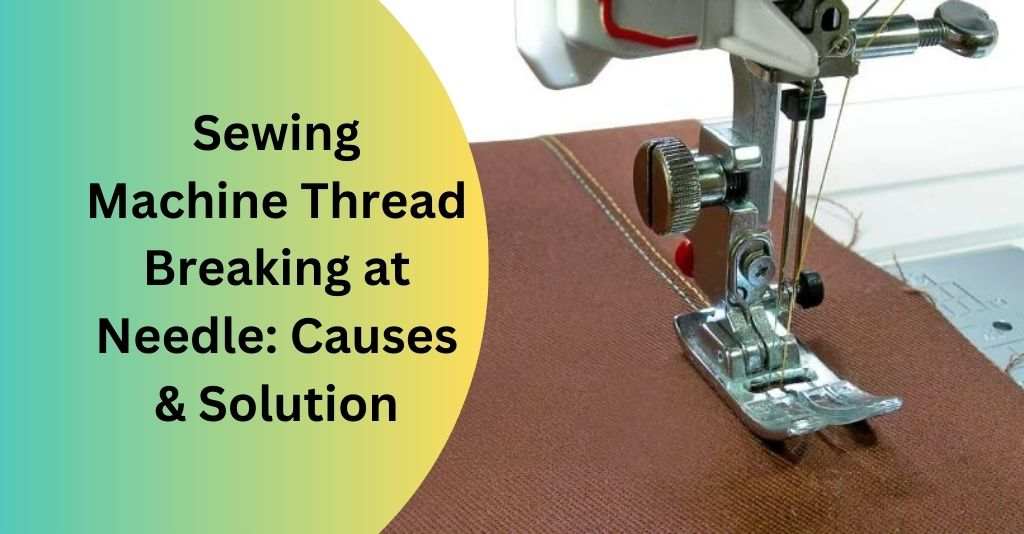
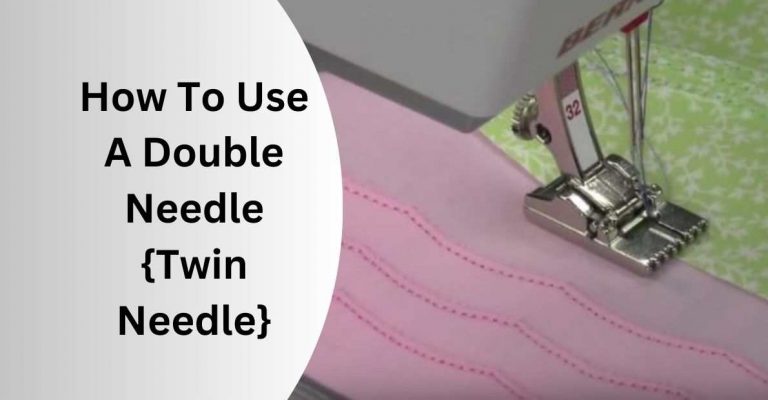
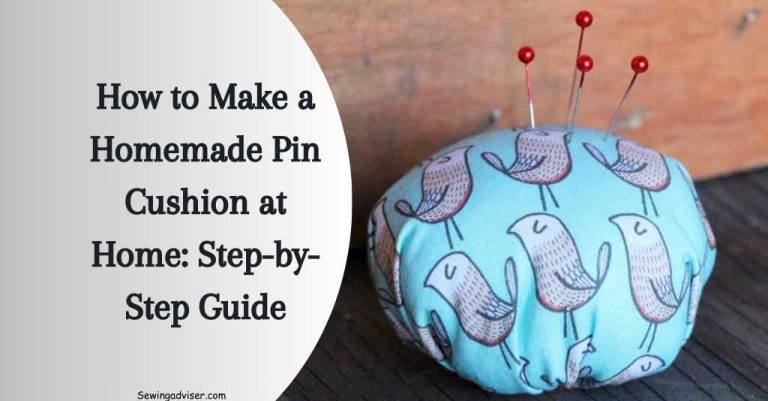
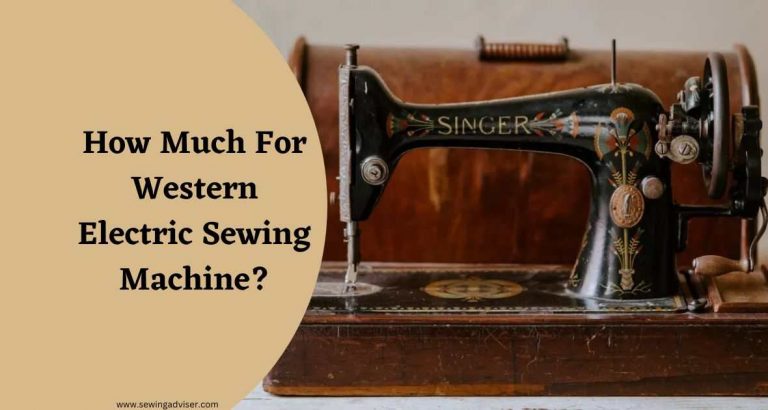
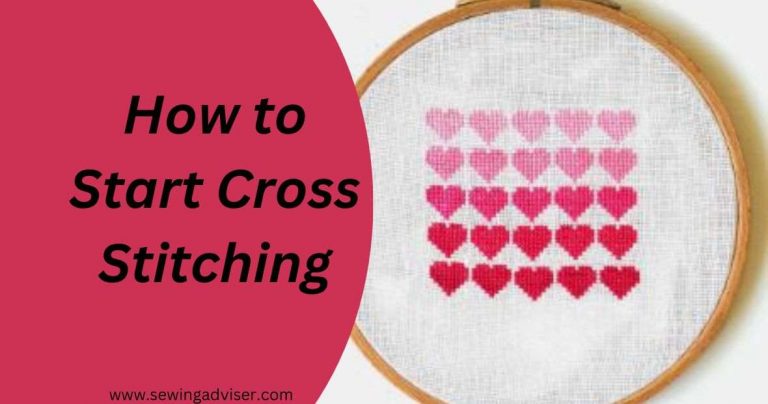
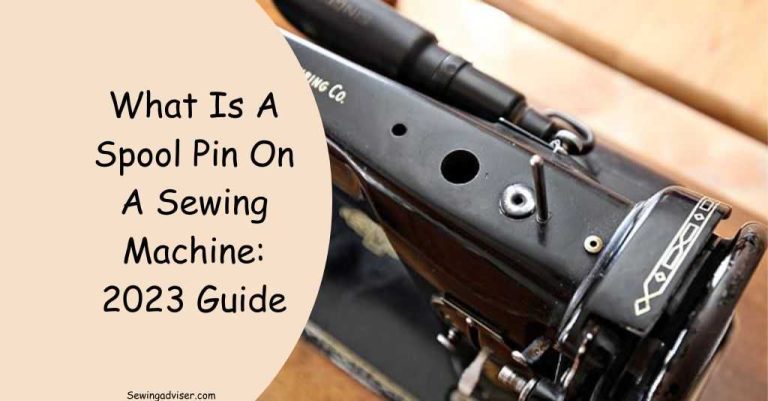
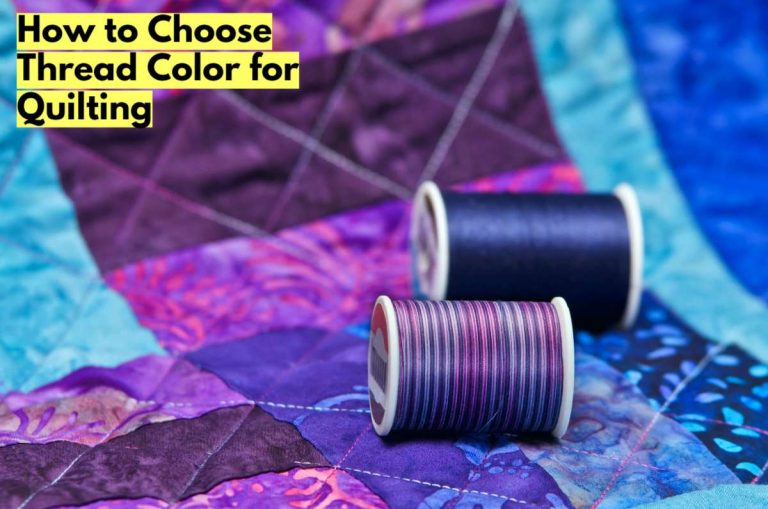
31 Comments